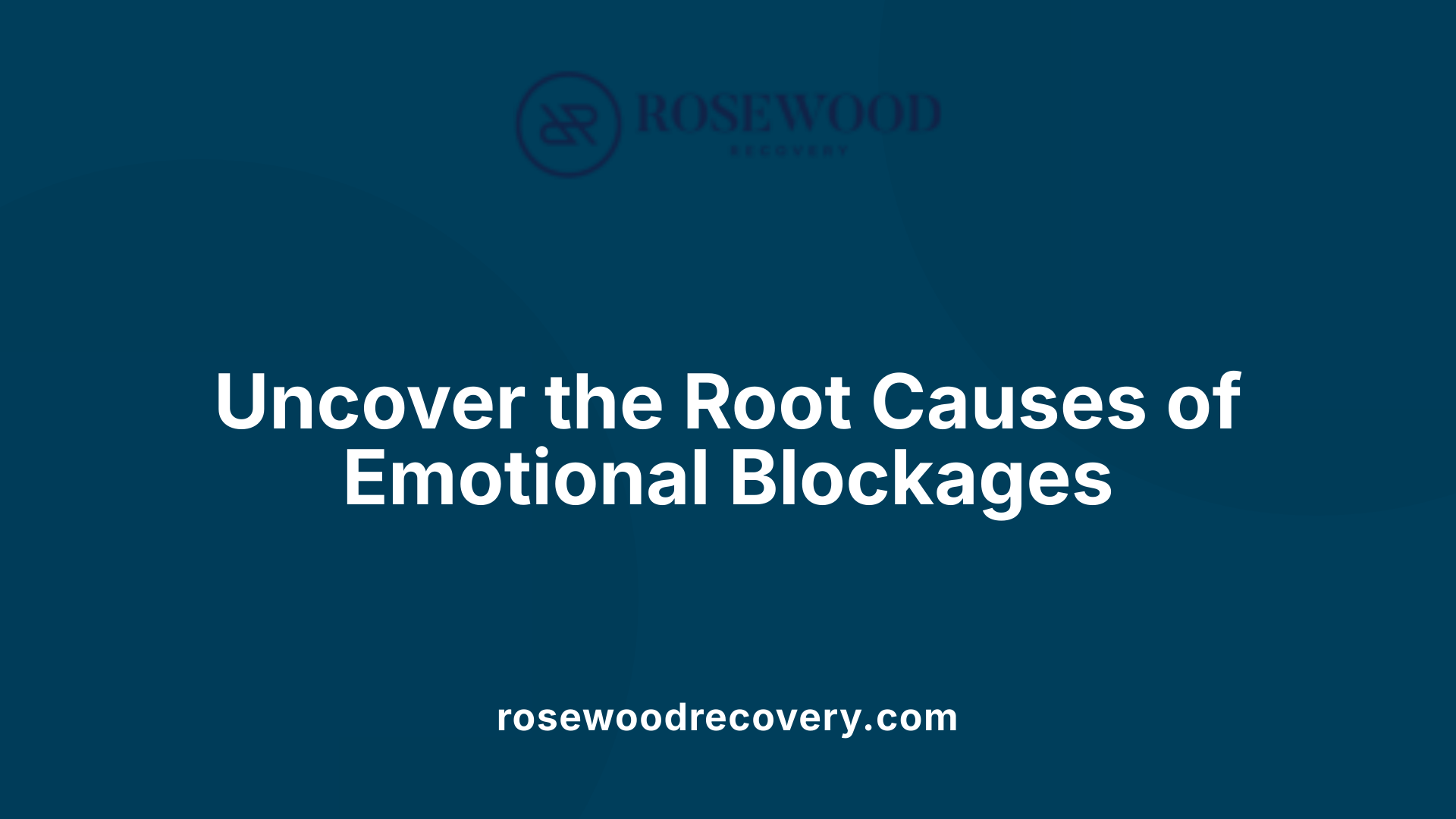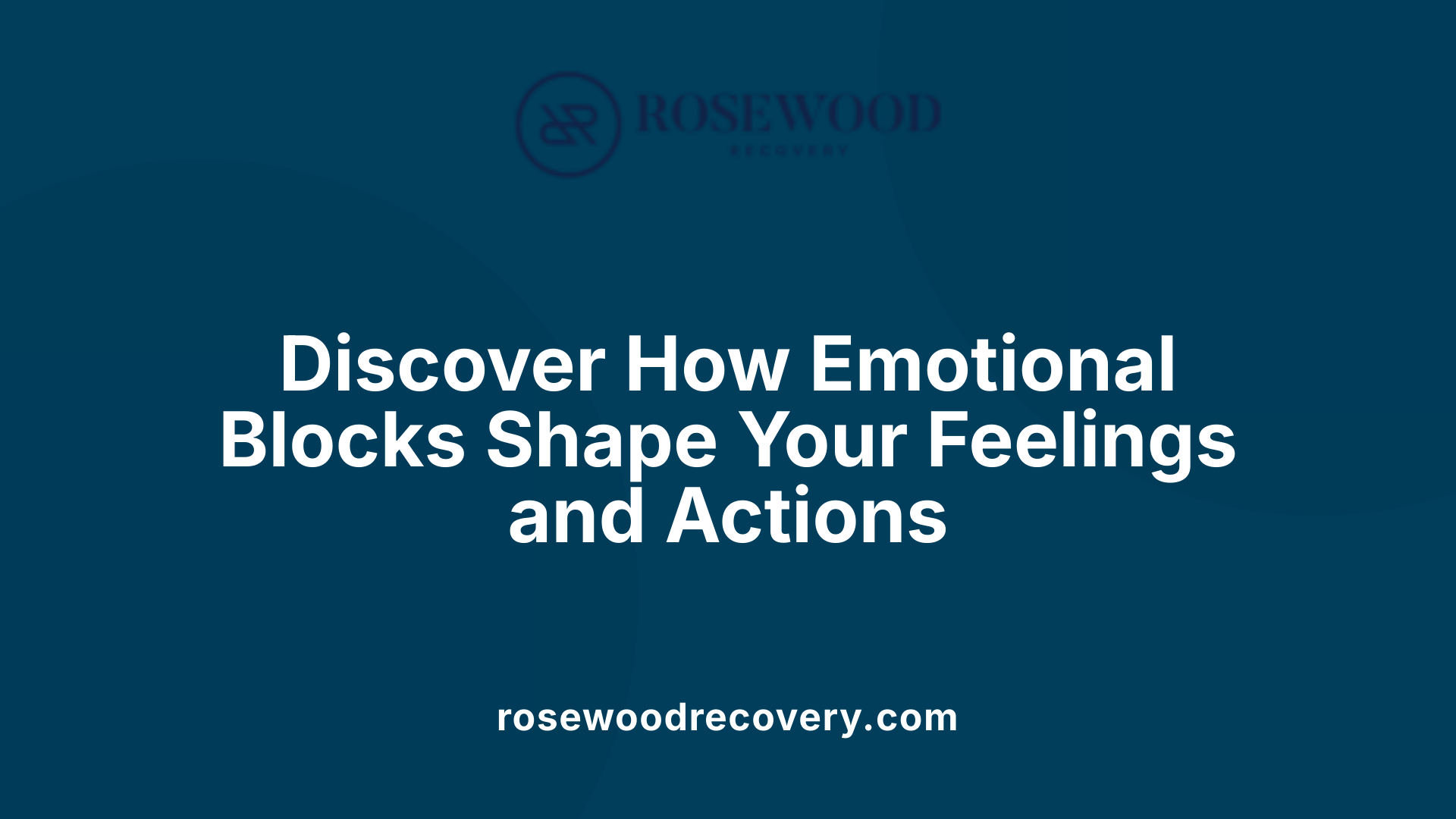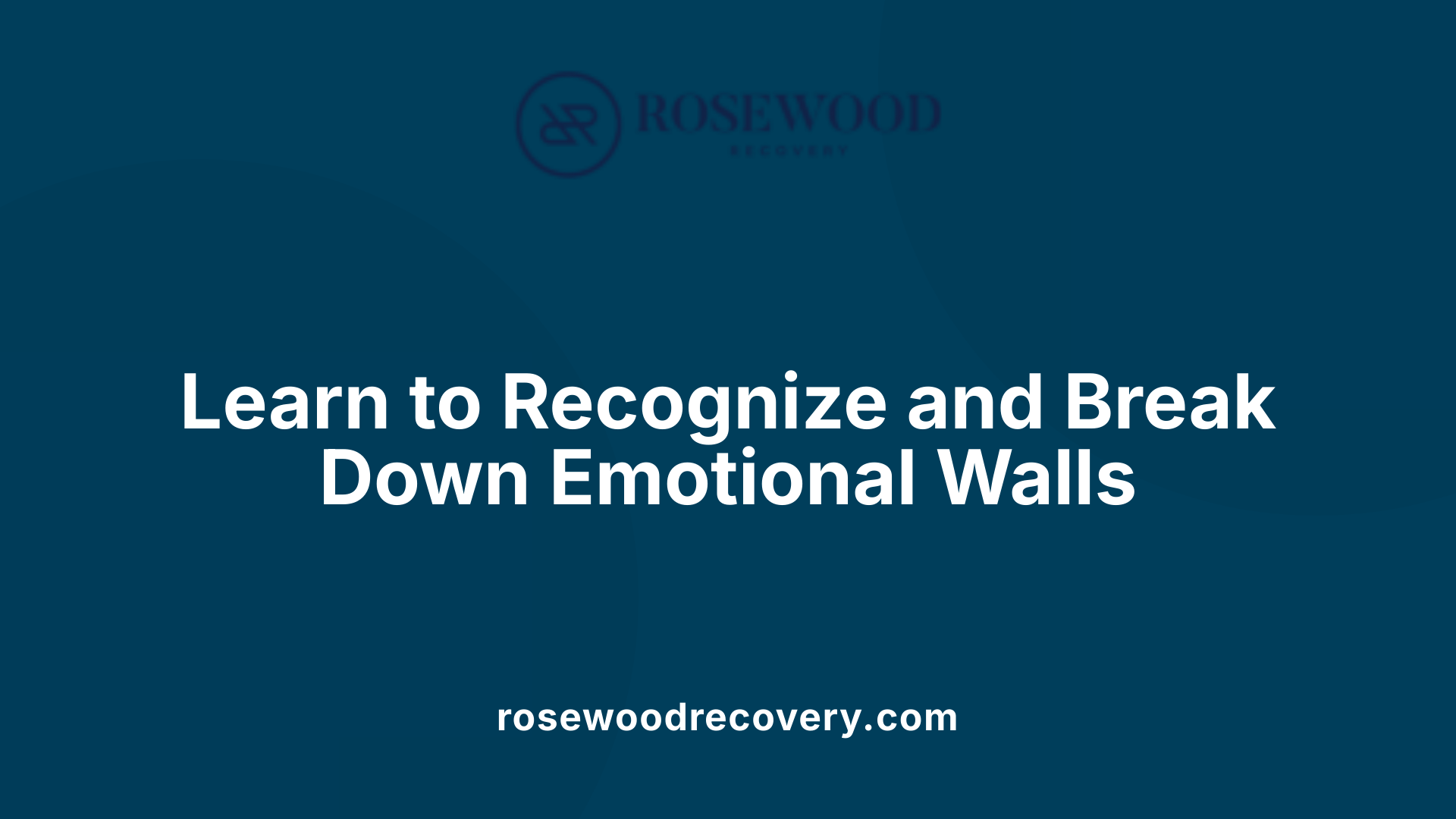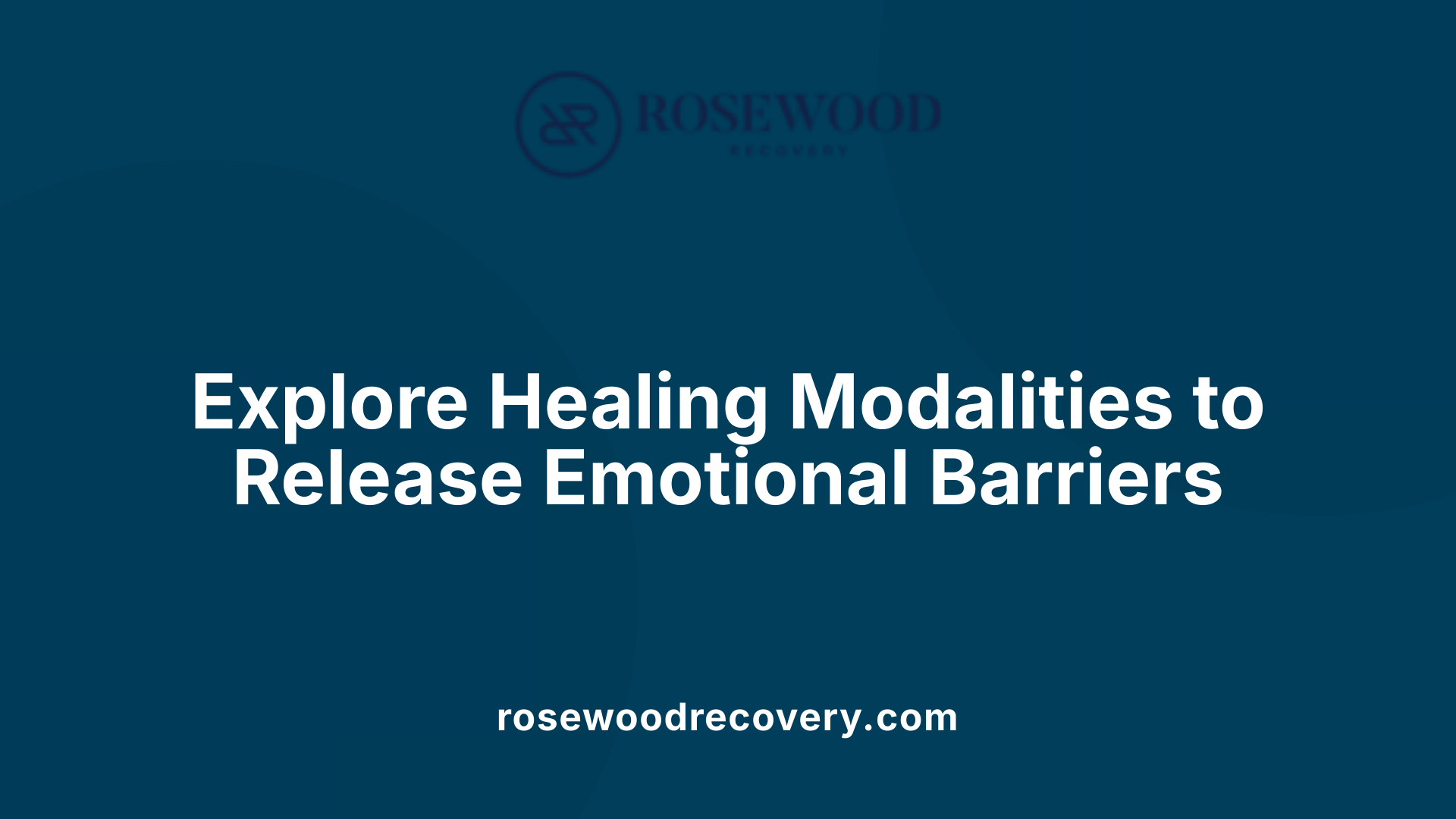What are emotional blocks and how to work through them
Unlocking Emotional Freedom: Pathways to Inner Healing

Understanding Emotional Blocks and Pathways to Resolution
Emotional blocks are internal barriers formed by unresolved stressors and traumas that prevent individuals from fully experiencing and expressing their feelings. These blocks develop over time due to various causes, including childhood experiences, traumatic events, societal conditioning, and negative thought patterns. Recognizing and working through these barriers is essential for emotional health, well-being, and meaningful relationships. This comprehensive guide explores the nature of emotional blocks, their signs, causes, and practical strategies for healing.
What Are Emotional Blocks and How Do They Manifest?
What are emotional blocks and how do they affect a person's emotions and behavior?
Emotional blocks are internal barriers formed by unprocessed stressors and traumas that prevent someone from fully experiencing, expressing, or understanding their emotions. These blocks typically develop when a person encounters difficult life events at a time when they lack the emotional resources to cope.
They often emerge as a defense mechanism—created by the brain to shield from emotional pain. As a result, individuals might deny, avoid, or dismiss their feelings, leading to a buildup of unresolved issues stored physically and mentally.
These blocks can significantly impact behavior and emotional health. People might feel numb, disconnected, or overwhelmed. Common manifestations include increased negative emotions, trust issues, self-sabotaging behaviors, and difficulties in forming or maintaining healthy relationships.
Physically, unresolved emotional issues can produce symptoms like muscle tension, headaches, gastrointestinal problems, fatigue, and even psychosomatic illnesses. Over time, emotional blockage can influence overall well-being, leading to symptoms like anxiety, depression, and physical ailments.
Healing from emotional blocks generally involves recognizing and accepting emotions, working through trauma, and shifting core beliefs. Therapeutic approaches such as talk therapies, somatic therapy, breathwork, and energy visualizations are frequently used to facilitate emotional release.
The process aims to help individuals process and integrate their feelings, thereby reducing suffering and paving the way for emotional resilience and peace.
How can I tell if I am experiencing emotional blockage?
Recognizing signs of emotional blockage is crucial for seeking help and initiating healing. Common indicators include emotional numbness or an inability to feel or understand your feelings.
Persistent negative emotions such as guilt, shame, irritability, or anger often point toward unresolved internal conflicts. You might experience a tendency to ruminate over past mistakes or ongoing worries that feel disproportionate to current circumstances.
Physical symptoms are also prominent markers. These can include muscle tension, headaches, digestive issues like stomach knots or diarrhea, chronic fatigue, or sleep disturbances. Such symptoms are often linked to emotional stress that has not been properly processed.
You may notice a sense of being stuck or powerless, avoiding social situations, or withdrawing from others. Struggling with low self-esteem, decision-making difficulties, or reliance on substances like alcohol or drugs can further suggest emotional blockage.
If you identify with these signs, engaging in self-awareness practices, seeking professional guidance, or exploring therapies such as mindfulness, journaling, or physical activity can help in releasing trapped emotions.
Signs of emotional blockage include emotional numbness, difficulty expressing or understanding feelings, and persistent negative thoughts such as rumination or lingering resentment.
Physical indicators may involve muscle tension, headaches, gastrointestinal issues, fatigue, and sleep disturbances. Emotional blockage often manifests as avoidance of social situations, increased anxiety, irritability, and feelings of being stuck or trapped.
Recognizing these signs early and employing therapeutic strategies can help release trapped emotions and improve emotional well-being. Techniques like bodywork, talk therapy, and mindfulness are effective tools for addressing these internal barriers.
Common Causes of Emotional Blockages

What causes emotional blockage?
Emotional blockage mainly stems from unresolved stressors, traumas, or negative life events that individuals are unable to process fully at the moment they happen. These can include experiences such as abuse, loss of loved ones, relationship conflicts, or sudden life changes that overwhelm emotional capacity. If emotional skills are underdeveloped or societal norms discourage expressing vulnerability, these unresolved issues tend to build up. Chronic stress, fears, and negative thoughts further reinforce emotional suppression, which may manifest physically as psychosomatic illnesses or other health problems.
Cultural and societal influences also play a role by promoting emotional restraint or stigmatizing certain feelings. Over time, these influences lead to habitual coping mechanisms—like avoidance or denial—that create barriers to honest emotional expression. This cycle of suppression not only hampers emotional health but can also impact physical well-being, leading to symptoms such as headaches, fatigue, and stress-related conditions.
How do childhood experiences influence emotional blocks?
Childhood experiences significantly shape how we handle emotions later in life. During early developmental stages, children learn emotional processing and expression through interactions with caregivers. If a child's feelings are dismissed, belittled, or judged, they may learn to suppress these feelings to seek acceptance or avoid rejection. Over time, these learned behaviors turn into internal barriers, fostering fears and limiting beliefs about oneself.
Such childhood conditioning creates deep-seated emotional walls that persist into adulthood, impacting trust, self-regulation, and the ability to connect emotionally with others. These early traumas may also lead to difficulties in understanding and managing feelings, laying the groundwork for various mental health challenges, including anxiety, depression, and physical health issues associated with emotional repression.
How Emotional Blocks Impact Feelings and Behavior

What are emotional blocks and how do they affect a person's emotions and behavior?
Emotional blocks are psychological barriers that develop as a result of unresolved stressors and traumatic experiences. They act like internal walls that prevent individuals from fully feeling, expressing, or processing their emotions. Often, these blocks stem from a tendency to deny, avoid, or dismiss difficult life circumstances, especially when the person lacked the emotional capacity or support at the time of the trauma.
When these barriers are in place, emotions such as sadness, anger, or fear become suppressed. This suppression leads to negative emotional buildup, which may manifest as anxiety, irritability, or numbness. Physically, unresolved emotional energy can cause symptoms like tension headaches, muscle stiffness, gastrointestinal issues, or fatigue.
Behaviorally, emotional blocks can lead to patterns such as self-sabotage, distrust in others, social withdrawal, or difficulty forming genuine relationships. The individual might also experience decreased self-esteem and an impaired ability to regulate emotions, making everyday stressors feel overwhelming.
Healing involves becoming aware of these internal barriers, accepting the presence of unresolved feelings, and actively working through them. Techniques like talk therapy, somatic practices, and bodywork can facilitate this process, helping individuals to process emotions healthily and rebuild emotional resilience.
What signs indicate emotional blocks are affecting my life?
Recognizing the signs of emotional blocking is crucial for beginning the healing journey. Typical indications include persistent feelings of guilt, shame, irritability, or sadness that seem disproportionate to current circumstances.
Physical symptoms often accompany these emotional states. These can include frequent headaches, digestive troubles, fatigue, or unexplained aches and pains. Emotional blocks may also manifest in behavioral patterns, such as:
- Social withdrawal or avoidance of social situations
- Difficulty trusting others or forming close relationships
- Feeling numb or disconnected from oneself and surroundings
- Inability to recognize or name emotions
- Repeated rumination over past mistakes or traumas
- Excessive worry or anxiety that hampers daily functioning
A person experiencing these signs might also notice a lack of motivation, feelings of being stuck or powerless, and difficulties in decision-making. These are all signals that underlying emotional barriers are influencing their mental health and overall well-being.
Effects on emotional regulation
Emotional regulation is the ability to manage and respond to emotional experiences effectively. When emotional blocks are present, this regulation becomes compromised. Individuals might oscillate wildly between emotional extremes or suppress feelings entirely, leading to emotional volatility or numbness.
This dysregulation hampers healthy emotional responses, making it difficult to handle stress or conflict constructively. Over time, it can contribute to mental health conditions such as anxiety and depression.
Relationship with self-esteem and trust
Unresolved emotional issues often erode self-esteem, leading individuals to view themselves negatively or feel unworthy of love and respect. Trust can also diminish, particularly trust in oneself and others, creating barriers to intimacy and connection.
People with emotional blocks may develop beliefs like “I am not good enough” or “Others will hurt me,” which reinforce feelings of isolation and fear.
Physical health implications
Chronic emotional suppression and unresolved trauma can have wide-ranging effects on physical health. The body responds to emotional stress with physiological changes, including increased cortisol levels and inflammation.
Over prolonged periods, these can contribute to issues such as psychosomatic illnesses, ulcers, skin problems, immune system impairment, and stress-related conditions like hypertension.
| Aspect | Impact | Underlying Cause |
|---|---|---|
| Emotional regulation | Mood swings, emotional numbness, difficulty managing feelings | Suppressed or repressed feelings |
| Self-esteem and trust | Feelings of inadequacy, difficulty trusting others, social withdrawal | Unmet emotional needs, trauma-related shame |
| Physical health effects | Headaches, fatigue, gastrointestinal issues, chronic pain | Stress hormones, emotional energy trapped in body |
Healing and Strategies to Overcome Emotional Blocks
How can processing past trauma help in releasing emotional blocks?
Processing past trauma plays a vital role in freeing individuals from emotional barriers that have built up over time. Often, these blocks form as defense mechanisms to protect against overwhelming pain, shame, or guilt associated with traumatic events. Therapeutic approaches such as Eye Movement Desensitization and Reprocessing (EMDR), cognitive-behavioral therapy (CBT), and mindfulness techniques are effective tools for accessing and confronting the unresolved emotions tied to trauma.
By gradually working through these painful memories in a safe environment, individuals can reduce their emotional reactivity and dysregulation. This process also helps reshape distorted beliefs about oneself and the world, restoring a sense of safety and hope. As the suppressed emotions are processed, feelings of numbness, shame, and guilt decrease, paving the way for emotional release and healing. Ultimately, trauma processing fosters trust in one's feelings, enabling healthier coping strategies and significantly improving psychological well-being.
What methods are effective for working through emotional blocks?
Effective strategies to overcome emotional blocks encompass a variety of body-mind approaches. Physical practices like breathwork, yoga, dance, or movement therapies help release stored trauma physically, easing the emotional burden. Mindfulness and acceptance techniques, notably the R.A.I.N. method (Recognize, Allow, Investigate, Nourish), cultivate awareness and safe exploration of difficult emotions.
Therapies such as EMDR, Trauma Release Exercises (TRE), shadow work, and Internal Family Systems therapy (IFS) provide deeper avenues for reprocessing unconscious feelings. Creating a supportive environment—whether through self-compassion, trusted friends, or professionals—is crucial for vulnerability and emotional release. Incorporating body-based modalities like Qigong and deep breathing further assists in releasing physical tension linked to repressed feelings. Combining psychotherapy and somatic practices accelerates emotional healing, fosters resilience, and deepens self-awareness.
How does self-awareness support overcoming emotional blocks?
Self-awareness is fundamental in addressing emotional blocks because it enables individuals to recognize and understand their inner emotional landscape. Practicing mindfulness and reflection fosters insight into underlying fears, beliefs, and triggers that sustain these barriers. This increased awareness enhances emotional intelligence, leading to improved regulation and healthier responses to stress.
Neurobiological research shows that heightened self-awareness shifts activity in brain regions responsible for self-processing, promoting emotional flexibility and resilience. When people are aware of their feelings, they can distinguish between primary and secondary emotions, breaking the cycle of avoidance and suppression. Over time, this internal clarity reduces reactivity, allowing for a more compassionate and constructive engagement with one's emotional world. Regular use of self-awareness practices supports ongoing growth, decreases avoidance behaviors, and empowers individuals to face their fears with confidence, facilitating deep inner healing.
How can processing past trauma help in releasing emotional blocks?
Processing past trauma helps release emotional blocks by facilitating the integration of unresolved emotions that have been suppressed or dissociated through defense mechanisms like trauma blocking. Therapeutic approaches such as EMDR, CBT, and mindfulness techniques enable individuals to access, confront, and process painful memories, reducing their automatic reactivity and emotional dysregulation. It also helps reshape distorted core beliefs about oneself, others, and the world that trauma often embeds, restoring a sense of safety and hope. By gradually confronting traumatic memories in a safe environment, survivors can diminish feelings of numbness, shame, and guilt, which serve as barriers to emotional healing. Ultimately, processing trauma allows individuals to release pent-up emotions, rebuild trust in their feelings, and develop healthier coping strategies, leading to profound emotional release and improved psychological well-being.
What are some effective ways to unblock repressed emotions?
Unblocking repressed emotions involves a multi-faceted approach centered on awareness, bodily sensations, and emotional expression. First, recognizing and feeling these emotions in the body is crucial. Mindfulness and body-awareness practices, such as the R.A.I.N. technique (Recognize, Allow, Investigate, Nourish), help facilitate this process.
Expressive activities like journaling, art, dance, or even crying serve as outlets for emotional release, allowing suppressed feelings to surface and be processed. Therapeutic modalities such as EFT (Emotionally Focused Therapy), TRE (Trauma Release Exercises), EMDR, and shadow work explore unconscious emotions, promoting healing.
Creating a safe environment—whether through self-compassion, trusted relationships, or professional support—is essential for sustained emotional work. Physical practices like yoga, Qigong, and deep breathing exercises further release physical tensions tied to repressed feelings, supporting holistic healing. Combining these approaches reduces emotional suppression, restores flow, and fosters resilience.
Identifying and Dismantling Emotional Walls

Recognizing emotional walls and their origins
Emotional walls are internal defenses built over time, often rooted in childhood experiences, societal conditioning, or traumatic events. These barriers form as a way to protect ourselves from emotional pain, shame, or fear. They can stem from neglect, criticism, unresolved trauma, or negative beliefs about expressing feelings. Commonly, they serve as masks to hide vulnerability, making it difficult to connect authentically with others or ourselves.
Understanding the origins of these walls requires honest self-reflection and sometimes professional help. Exploring childhood memories, patterns of behavior, and emotional reactions can reveal underlying causes. Recognizing the stories we tell ourselves—like 'I am not safe to feel' or 'Emotions are a sign of weakness'—is essential to begin dismantling these internal barriers.
Harnessing Spiritual and Alternative Healing Modalities

How can spiritual or alternative healing approaches aid in overcoming emotional blocks?
Spiritual and alternative healing methods offer valuable pathways for releasing emotional blocks, helping individuals reconnect with their inner selves and restore emotional balance. These approaches recognize the deep link between the mind, body, and spirit, aiming to dissolve trapped emotions that may contribute to mental and physical health issues.
Energy healing practices like Reiki work to clear energetic disruptions in the body's energy fields. By channeling universal life force energy, Reiki practitioners help unblock stagnation, release negative emotions, and promote a sense of calm and well-being.
Guided meditation and visualization techniques facilitate emotional release by enabling individuals to access their subconscious mind. This process encourages the acknowledgment of suppressed feelings, helping release emotional baggage and fostering inner peace.
Shamanic practices often involve rituals, journeying, and the use of sacred tools to access higher consciousness. These rituals can help identify and resolve unresolved traumas stored deep within, offering profound spiritual cleansing and emotional healing.
| Practice Type | Description | Benefits |
|---|---|---|
| Energy Healing | Uses hands-on or remote techniques to manipulate the body's energy fields | Clears blockages, balances energy, promotes relaxation |
| Guided Meditation | Focused mental exercises to connect with inner states | Enhances emotional awareness, reduces stress |
| Shamanic Rituals | Ceremonial practices for spiritual cleansing | Facilitates deep emotional and spiritual release |
These modalities often incorporate mindfulness, breathwork, and ritualistic elements, enriching the healing experience. When practiced with the guidance of qualified professionals, they can serve as a powerful complement to conventional therapy, offering holistic support for emotional recovery.
Therapies like hypnotherapy, sound healing, and crystal therapy are also often integrated within spiritual frameworks to reprogram subconscious patterns and restore harmony within the psyche.
In essence, spiritual and alternative approaches provide gentle yet profound tools that help dissolve emotional barriers, leading to greater resilience, inner peace, and personal transformation. They work best when combined with ongoing self-awareness practices and professional support, enabling individuals to navigate their emotional landscapes with renewed clarity and strength.
Embracing the Path to Emotional Well-Being
Understanding and working through emotional blocks is a vital process for emotional and physical health. By recognizing the signs, exploring their roots, and employing strategies like therapy, bodywork, mindfulness, and spiritual practices, individuals can facilitate profound healing. Development of self-awareness, embracing vulnerability, and seeking support are crucial steps in dissolving these barriers. Remember, healing is a gradual journey that requires patience, compassion, and commitment. With the right tools and mindset, anyone can release trapped emotions, rebuild trust in their feelings, and live a more authentic and joyful life.
References
- Emotional Blockage: What It Is and How to Unblock - KIM EGEL
- Skill #15 Overcoming Mental Blocks - Therapy in a Nutshell
- Emotional blockage: What is it and how to overcome it? - CogniFit Blog
- Emotional Blockage: Causes, Symptoms & How to Release It - PIVOT
- How To Be Free From All Emotional Blocks And Fears - Medium
- Where Emotions Get Trapped in the Body and How to Release Them
- Reviving Intimacy: Overcoming Physical and Emotional Blocks
- How To Identify Emotional Blocks and Overcome Past Relationship ...
More Articles
Recovery Begins Here
Click below to get in touch and schedule a consult call with our team to begin your journey towards happiness and freedom.
Rosewood Recovery does not discrimate against any person because of the race, color, religious creed, ancestry, age, sex, sexual orientation, gender identity, national origin, handicap or disability or the use of a guide or support animal because of the blindness, deafness or physical handicap.





